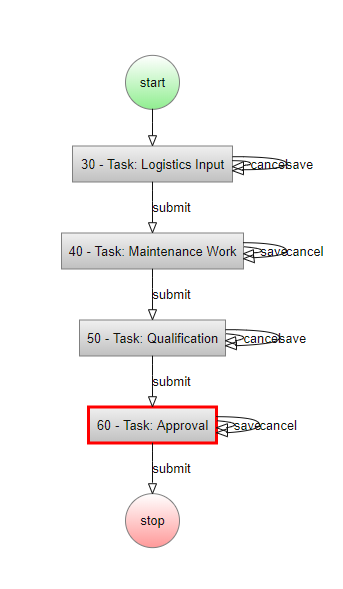May 2018
FabGuard APC v5.00.03 Release »
Metric History in FabGuard Web »
New RGA Features beyond FabGuard version 854 »
FabGuard eOCAP Workflow Framework »
No Logistics from Tool or MES? Try Assigning Them from Signal Bin Logic! »
Understanding Host Name Resolution »
Change the Properties to Make Sure FabGuard Executive Runs as an Administrator »
FabGuard Auto Start and Windows Update Support for Windows 10 »
End-of-Life Support for FabGuard Versions and Microsoft Products »
FabGuard eOCAP Workflow Framework
The latest version of FabGuard eOCAP introduces a new feature called Workflow Framework. The Workflow Framework allows a user to easily model and schedule a process with one to many tasks.
Features
- Ability to bring together existing packages in a modelled workflow
- Leverage data tables and metadata to make the workflow as generic as possible, reducing system maintenance
- Ability to schedule workflows
- Integration with existing organization systems
- All output information for every task in the workflow, including the state of a package, input variables, calculated variables, and generated reports are stored within a database for each instance of a workflow
A task can be specifically assigned to a package, where a package is defined as the modeled content of an organization’s instructional document. FabGuard eOCAP currently provides two additional frameworks to support building a project. Tasks can also be generic and then leverage a database table to assign a package or packages to the task based off a key attribute, such as an order number. Using generic tasks within a workflow allows the workflow to fit many uses cases within an organization. Generic tasks reduce the number of workflows that need to be created and also reduce the maintenance of those tasks.

Figure 1: Sample maintenance workflow in FabGuard eOCAP.
Example
Consider a workflow for the maintenance of equipment. This workflow example will consist of four generic tasks (Figure 1).
The first task, Logistics Input, involves the collection of metadata that will be passed between tasks and used throughout the workflow to determine which packages to assign to other tasks. This task can be an interaction between the end user and the system, or information can be fed forward from an external application. It is also possible for an external system to silently start FabGuard eOCAP, bringing the end user directly to the required content.
The second task, Maintenance Work, walks the end user through the modeled maintenance procedure package(s). If defined within an easily configured database table, the metadata passed from the first task can be used to assign the relevant procedure(s). This allows a system administrator to setup not only a weekly maintenance flow assigning one procedure, but also an annual maintenance flow assigning multiple procedures. There could also be further assignments based on equipment type. All of the specifics of the task assignment, either to equipment and/or to maintenance type, are stored in the database. This allows the ‘Maintenance Work’ task to stay generic so that it will apply to multiple types of work.
The third task, Qualification, allows the end user to follow additional instructions after maintenance work is complete. Qualification may include exercising or testing the equipment. External systems are often needed to prepare the equipment for testing; FabGuard eOCAP has the ability to communicate with these external systems.
The fourth task, Approval, requires a user with a specific role to approve the work that has been completed. It is possible to assign and enforce roles at the task level within the FabGuard eOCAP Workflow Framework. The roles can be configured based on the user’s system credentials or the user’s group as defined by an external authentication system.
Summary
The new FabGuard eOCAP Workflow Framework integrates existing packages into a single workflow by leveraging data tables and metadata. The end result is reduced system maintenance and simpler management of end user tasks.